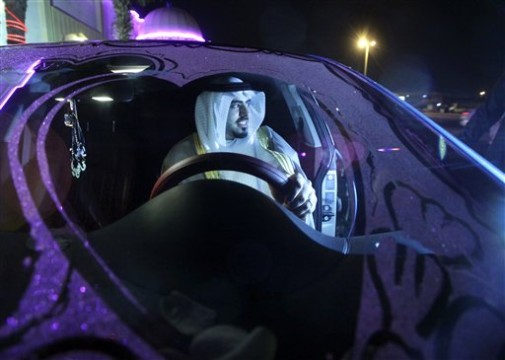-
Tips for becoming a good boxer - November 6, 2020
-
7 expert tips for making your hens night a memorable one - November 6, 2020
-
5 reasons to host your Christmas party on a cruise boat - November 6, 2020
-
What to do when you’re charged with a crime - November 6, 2020
-
Should you get one or multiple dogs? Here’s all you need to know - November 3, 2020
-
A Guide: How to Build Your Very Own Magic Mirror - February 14, 2019
-
Our Top Inspirational Baseball Stars - November 24, 2018
-
Five Tech Tools That Will Help You Turn Your Blog into a Business - November 24, 2018
-
How to Indulge on Vacation without Expanding Your Waist - November 9, 2018
-
5 Strategies for Businesses to Appeal to Today’s Increasingly Mobile-Crazed Customers - November 9, 2018
Saudi Arabia’s 2016 growth to further dive amid rising public debt
Due to these low prices, 9 out of 13 OPEC member states including Saudi Arabia, Iraq, Iran and Kuwait announced deficits in their budgets for next year making it impossible for some countries to continue spending in light of oil prices fluctuating around $36 a barrel. The International Monetary Fund had projected a deficit of $130bn.
Advertisement
Saudi Arabia unveiled its budget for 2016 with a projected deficit of 326 billion riyals (87 billion dollars), as the oil-rich kingdom has been hard hit by low global commodity prices.
Oil struggled in subdued Asian trade Tuesday on tepid economic data from Japan and indications that major crude exporter Saudi Arabia plans to keep prices at multi-year lows in 2016. Income from crude exports was 444.5 billion riyals, making up 73 per cent of total revenue.
But despite the slump in the world oil market, Riyadh has maintained high spending and launched an expensive military intervention in Yemen, drawing on huge fiscal reserves it had accumulated when prices were high.
In an effort to drive down oil prices and put rival producers out of business, Saudi Arabia uncapped oil production past year.
As a results, cuts are coming: The budget calls for a 14% reduction to 840 billion riyals ($224 billion U.S.), down from 975 billion ($260 billion U.S.).
To help make up the shortfall, the country’s finance ministry said it would cut subsidies for fuel.
The situation is so bad that the Saudi government said petrol prices, which is usually very cheap in Saudi Arabia because of the glut of oil it produces, may increase by 50% and diesel, electricity and water prices will also increase.
Saudi Arabia’s production stance has riled rival producers.
Analysts identified positive elements to the budget announcement, Reuters reported, including that the 267 riyal deficit was lower than the 400-450bn feared, and the planned cut in 2016 spending was smaller.
The finance ministry said it is also considering plans to raise charges on public services and to apply value-added tax in cooperation with other Gulf Arab nations, which are facing similar pressure from the oil price drop.
Advertisement
The kingdom withdrew more than $80bn this year from its reserves, which stood at $732bn at the end of 2014, and issued bonds worth about $20bn.





























